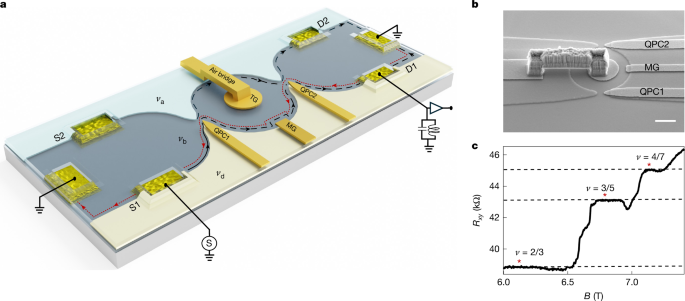
"The interference measurements revealed unexpected flux periodicities of Δ Φ = ν−1Φ0 for 'particle-hole conjugated' states, challenging existing theories in fractional quantum Hall physics."
"Bunched elementary quasiparticles exhibited coherence in pairs, triples, and quadruplets, leading to novel insights in their interactions and behaviors within quantum interferometers."
"The introduction of the metallic top gate transformed the interferometer's bulk into an antidot, resulting in the unexpected dissociation of bunched quasiparticles, reinstating conventional flux periodicity."
"Measured shot-noise Fano factors of F = ν suggest neutral modes accompany the conjugated states, indicating a complex interplay of dynamics in fractional quantum Hall systems."
This article discusses recent findings from interference experiments focusing on fractional quasiparticles in the quantum Hall effect. Contrary to expected behaviors, observations indicated interference flux periodicities following Δ Φ = ν−1Φ0 for specific particle-hole conjugated states at various filling factors. The study revealed that strong interactions caused bunched elementary quasiparticles to form coherent groups of varying sizes. Intriguingly, introducing a small metallic gate resulted in the dissociation of these grouped states, restoring conventional charge periodicity, while the Fano factor remained constant at F = ν, implying lingering effects of neutral modes. These results challenge current theoretical frameworks surrounding quasiparticle interactions in quantum Hall states.
#quantum-hall-effect #aharonov-bohm-interference #fractional-quasiparticles #interferometry #quasiparticle-dynamics
Read at Nature
Unable to calculate read time
Collection
[
|
...
]